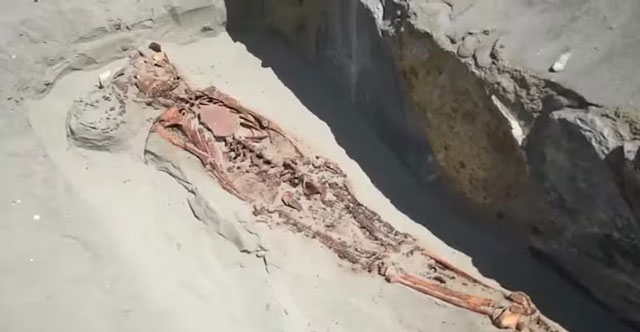Daijiworld Media Network - Lima
Lima, Aug 9: In a rare and grim discovery, archaeologists on Peru’s northern coast have unearthed 14 skeletal remains believed to be victims of ritual human sacrifice dating back around 3,000 years.
The remains were found near what is believed to be a ceremonial temple of the Cupisnique culture, which flourished over a millennium before the rise of the Incas. Some of the victims were buried face down, with hands tied behind their backs, pointing to what experts describe as a “typical form of human sacrifice.”

Henri Tantalean, the archaeologist leading the excavation, said the manner of burial, along with visible signs of trauma and violence, marks these findings as highly unusual. Unlike the elaborate burials common in other Peruvian archaeological sites, these individuals were interred in simple sand pits without offerings or treasures.
The site, located near a beach in La Libertad region, about 675 km north of Lima, adds to Peru’s rich archaeological heritage, which includes famed sites like Machu Picchu and the Nazca Lines.